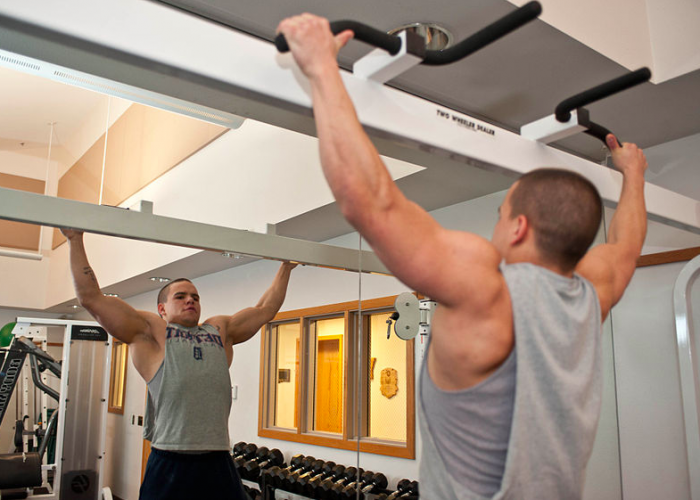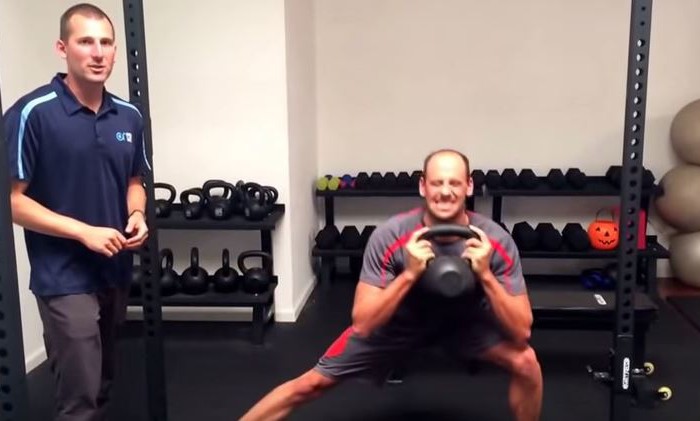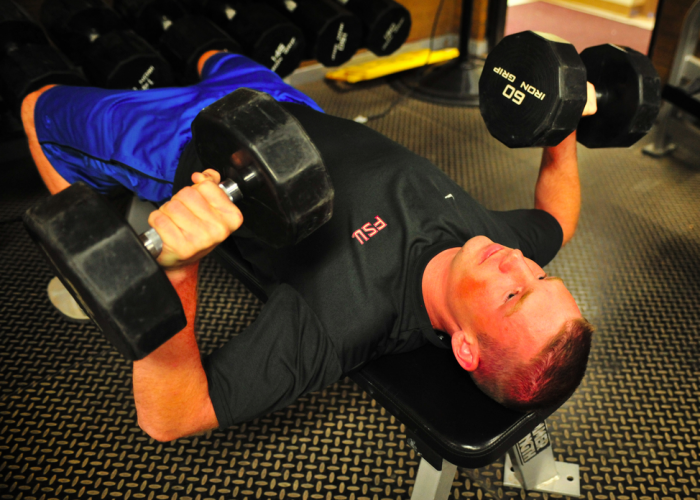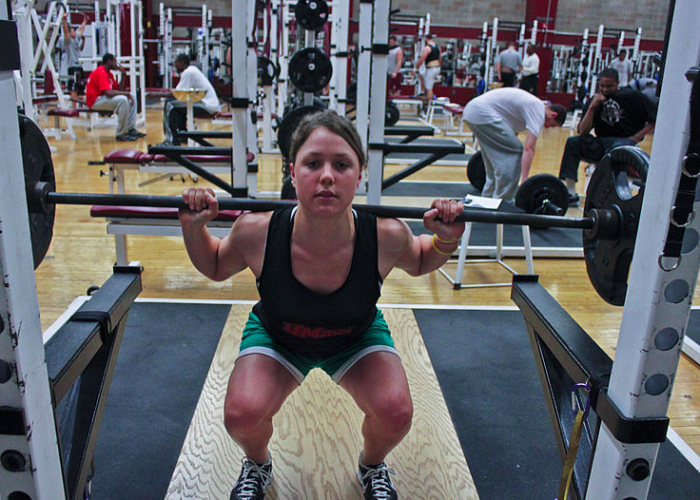Exercises
Here are five key exercises along with their benefits that coaches can incorporate into weight room programs for great results.
1. Pull-ups

Photo Courtesy: US Air Force
How is it beneficial: A proper stroke when swimming generates a full extension all the way through the lats, back, shoulders, and even the wrist. Therefore, a pull-up done properly mimics such movement. This allows the swimmer to strengthen their pull as they glide through the water.
2. Lateral Lunge

Photo Courtesy: G. John Mullen
How is it beneficial: This movement opens up the muscles of the groin and hips, thus helping to improve a swimmer’s hip rotation, which according to many coaches is vital in swimming. Many distance swimmers end up relying on their hip rotation to allow for them to take long and strong strokes and pull more water. Especially when swimming those longer races.
3. Alternating Dumbbell Press

Photo Courtesy: By Master Sgt. Claude Lawson, 27th Special Operations Force Support Squadron
How is it beneficial: This exercise helps to promote shoulder stability without placing excessive pressure directly onto the joint. Shoulder stability is important to many swimmers with the excessive amount of stress swimmers put on their shoulders swimming lap after lap. If a swimmer builds strong shoulder stability they can lower their chances of developing shoulder issues later on in their swimming career such as tendonitis.
4. Mini Band External Rotation
How is it beneficial: This exercise is best in helping strengthen your hips and glutes, which provide much of your power in swimming. Think of how powerful a swimmer’s kicks are, they generate from a swimmers hips so if a swimmer has strong hips then that will lead to strong kicks. This is especially important to swimmers who swim sprint races, like Caeleb Dressel, they draw a lot of their power from their kicks to move through the water.
5. Squat Jump
How is it beneficial: This exercise focuses on working the hips, knees, and ankles. Which is important in helping to create power off the blocks and off the wall. Swimmers rely on their starts and turns during races so by working your muscles that are involved in getting off the blocks as well as quick turns swimmers can develop and increase their speed as well as reaction time.


